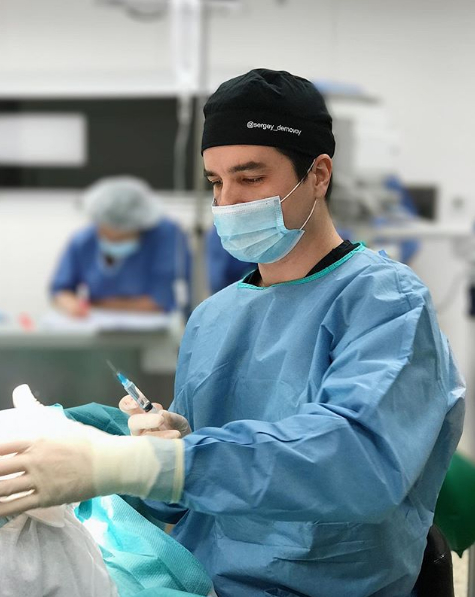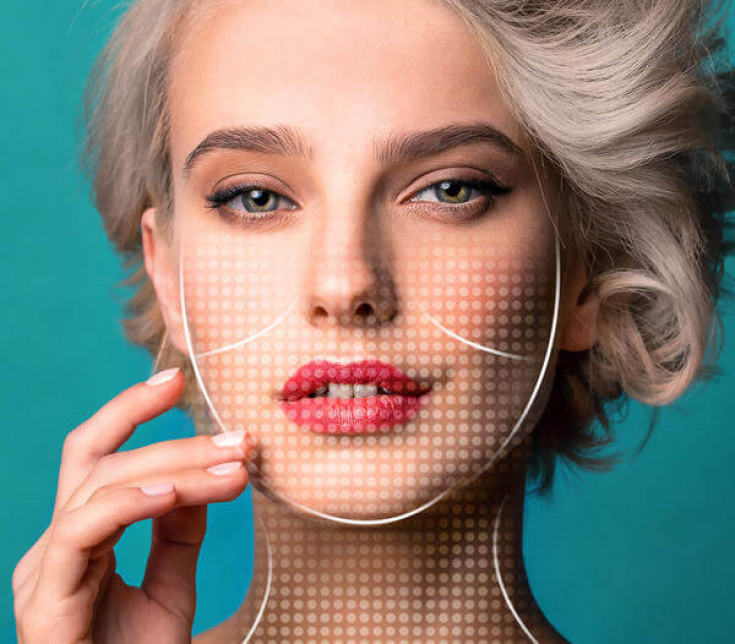Beauty – concept is subjective. Plastic surgery and cosmetology are branches of medicine that rely on social indications. In the field of plastic surgery, there is often a link to age, but this is not so. Age is not a fundamental indication for the operation, it is necessary to look at the absolute indications.
This material presents all the details and subtleties of plastic surgery from Sergey Dernovoy, a plastic surgeon with over a decade of experience.
- Ideal proportions, do they exist and is it necessary to run after the canons of beauty
- Rhinoplasty, – what are the indications and contraindications
- Nursing moms, wisdom teeth, botox, allergies – and where does plastic surgery
Ideal proportions, do they exist and is it necessary to follow the canons of beauty
Ideal proportions are when the face has a well-defined middle zone, a clear transition from the zygomatic zone to the angle of the lower jaw. The natural attractiveness is determined by the Oji Line - the alternation of bends in the form of bulges and depressions, in the area of the superciliary arch and cheek-zygomatic zone, which give the face a special charm. Oji's line is visible by turning the face to ¾, the face has the appearance of an inverted triangle with the apex down. Plastic surgery in this area is carried out in order to aggravate this transition or make the Oji line more pronounced, by removing or moving the sagging part, creating volume in the buccal region.
Subscribe to our page on Facebook!

Age Preferences in Plastic Surgery
Most often, girls of 20 years old come to the surgeon for a consultation on rhinoplasty. Rhinoplasty and Mammoplasty are the most popular plastic surgeries. Rhinoplasty ranks first in statistics in the colder season, mammoplasty in the warm season.
The next most common – bullhorn. This is an operation to shorten the distance from the nose to the upper lip in order to visually increase its volume.
Plastic eyebrow correction - changing the positions of the eyebrows when the eyebrows look drooping. But keep in mind that if the forehead is high enough (the upper third of the face – from the hairline to the eyebrows), there is a risk of raising the hairline, which will create the appearance of mild baldness.
Subscribe to our page on Instagram!
Patients aged 28 to 35 are most likely to see a plastic surgeon for:
- corrections of the lower (transconjunctival blepharoplasty) or upper eyelid (upper blepharoplasty);
- correction of overhanging soft tissues above the eyebrows;
- Chin shape correction.
Age category from 35 and above, in addition to the previously listed operations, they prefer facial rejuvenation operations: circular facelift, platysmaplasty (reconstruction of the neck-chin angle).
The Art of Plastic Surgery
Plastic surgery differs from general surgery in that postoperative scars are as invisible as possible. The plastic surgeon determines in which area the skin stretches well (field lines or Langer lines) in order to make a scar that will not be stretched by the skin in the future and will become as invisible as possible.
One of the tricks of plastic surgery – hide scars in natural folds. There are many medical and cosmetic products that are prescribed to patients in the late postoperative period in order to prevent the formation of some kind of rough scarring – silicone adhesive plasters, gels, ointments, physiotherapy.
Rhinoplasty, – what are the indications and contraindications
Rhinoplasty appropriate when the nose seems disharmonious in relation to the face. There are anthropometric concepts of the face – head shape, width and height, facial features. In some cases, the length or width of the nose does not fit into the anthropometry of the face.
Rhinoplasty can be performed both with closed and open access. In closed rhinoplasty, all incisions are made inside the nostrils of the nose without any external cuts. Closed rhinoplasty is the prerogative of primary operations, when the patient has not had any previous operations in his anamnesis, he did not suffer any injuries. This is the most untouched nose before.

Open Rhinoplasty – this is an operation in which, in addition to closed access, a small incision is made in the columella area. Open rhinoplasty is often performed in case of repeated operations, after any injuries or pathologies.
Indication for rhinoplasty:
- congenital pathologies;
- acquired pathologies (post-traumatic and postoperative deformities);
- aesthetic discomfort or social indications (presence of an osteochondral hump on the back of the nose, bifurcation of the tip of the nose, wide or long nose);
- rejuvenating rhinoplasty.
It should be taken into account that with age, the nose becomes visually larger, because the soft tissues are stretched, the quality of the skin deteriorates, there is a slight increase in cartilage tissue, visual drooping of the nose. In this case, anti-aging rhinoplasty is performed.
When performing facial rejuvenation surgery, minor rhinoplasty is also performed, the main task of which is to make the nose more accurate and slightly raised.
Subscribe to our page in Telegram!
Rhinoplasty is one of the most complex facial surgeries. Postoperative restoration of the nose ("the nose falls into place") lasts about a year. Within a few months after the operation, the patient may notice certain changes in the shape of the nose, which are associated with different thicknesses of the skin in different parts of the nose. Scarring, convergence of edema, the formation of planar structures occurs in different time periods. The duration of two months after the operation, the nose may slightly change its position and shape.
Complications after rhinoplasty:
- Nose shift towards curvature;
- A fistula (hole) in the nasal septum as a result of a previous septoplasty;
- Loss of sensation at the tip of the nose (may be observed for about six months after surgery).
Rhinoplasty – creative operation, there are many technologies for its implementation. Modern rhinoplasty is aimed at:
- strengthening the inside of the nose in the weakest positions,
- curvature alignment;
- strengthening of the nose section on the opposite side, extending to the
other side. Nursing moms, wisdom teeth, Botox, allergies – and where does plastic surgery
Deformation of the oval of the face after the removal of a wisdom tooth Teeth have several functions. Due to pressure or support, a certain part of the bone tissue is provoked and preserved. There is a certain load effect on the tooth, which is transmitted to the bone and muscles of the face. If several teeth are removed from the dentition, then there is a risk of changing the oval of the lower jaw due to a change in the load on the lower jaw. Accordingly, the natural oval of the lower jaw suffers. If the patient previously had an angular (massive) jaw shape – options are being considered to fill this zone. If a redistribution of soft tissues has occurred and it seems to the patient that the soft tissue has begun to hang (deformation) – the skin is tightened and fixed.
There are several options for correcting the oval of the lower jaw:Lift;
- Installation of implants;
- Orthodontic surgery – work with bone tissue, cutting the lower and upper jaws with their further movement relative to each other. This intervention completely changes the configuration of the face, because the entire framework changes its position.
Botox and facelift – phased caution of anti-aging treatments?
Botulinum toxinstarts to work in 3-4 days. According to the recommendations of cosmetologists, you need to wait two weeks to understand how much facial expressions have changed after the injection. A month or a half after injections of Botox, you can think about a facelift.

Why should I wait for this time – after the operation, antibiotics are prescribed, respectively, if lifting is done a week after
botulinum toxin, then due to the use of antibiotics, there is a possibility of smoothing the effect. Antibiotics adversely affect the effectiveness of botulinum toxin. Indication for facelift – soft tissue displacement. The facelift can be repeated. The effectiveness of a facelift is on average 10-15 years. Before doing the operation, it is recommended to go to several surgeons and cosmetologists, based on your preferences and indications.
Anaphylactic shock in plastic surgery
Anaphylactic shock– this is an allergic reaction of an immediate type, the occurrence of which is dangerous during any procedure, especially under local anesthesia. Plastic surgeries are performed under general anesthesia, which is the safest type of anesthesia in surgery. If a patient has a history of some kind of allergy for plastic surgery, he is sent for examination to an allergist. Based on the results of the analyzes – Allergo-list (results of allergy tests), a treatment plan is drawn up, certain adjustments are made for the introduction of anesthesia, for any operation or procedure.
Cosmetology and plastic surgery precautions for breastfeeding mothers
Mammoplastyand liposuction are contraindicated for mothers who have recently given birth and are breastfeeding. The decision on the operation should be returned no earlier than 4-5 months after breastfeeding or childbirth (if breastfeeding was not carried out), since during this period the woman's hormonal levels should normalize. Otherwise, problems with scarring may occur, since prolactin (released during breastfeeding), one of those hormones that can provoke an abnormal reaction to the scar. Some cosmetic procedures, such as Botox injections, are also contraindicated for a nursing mother, since the injected substances can be transmitted with milk and have a toxic effect on the child.
Plastic surgery and cosmetology allow us to love ourselves, feel younger and more confident. But, no matter how they are, the decision to go under the knife, even for aesthetic purposes, must be approached responsibly. An important aspect is the choice of a qualified doctor with extensive experience, since the consequences of an incompetent intervention can be irreparable. We deserve to strive for the best and enjoy our reflection in the mirror!
YouTube channel
:





Add a comment